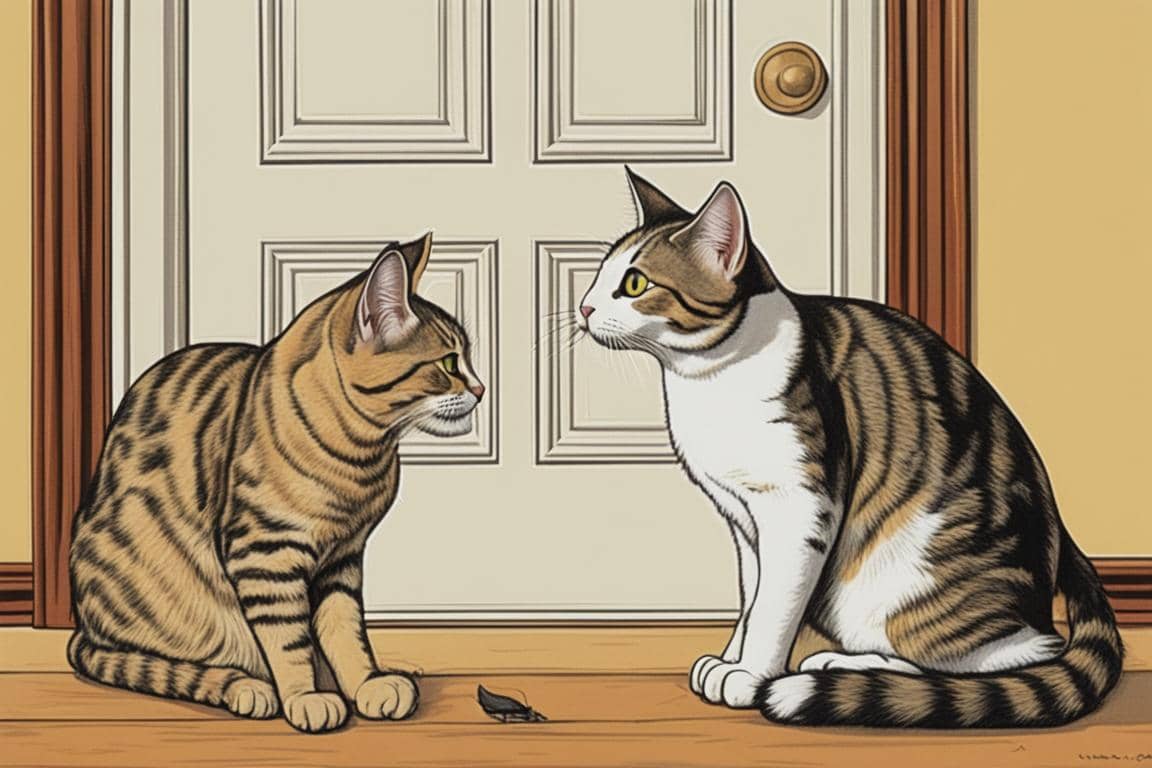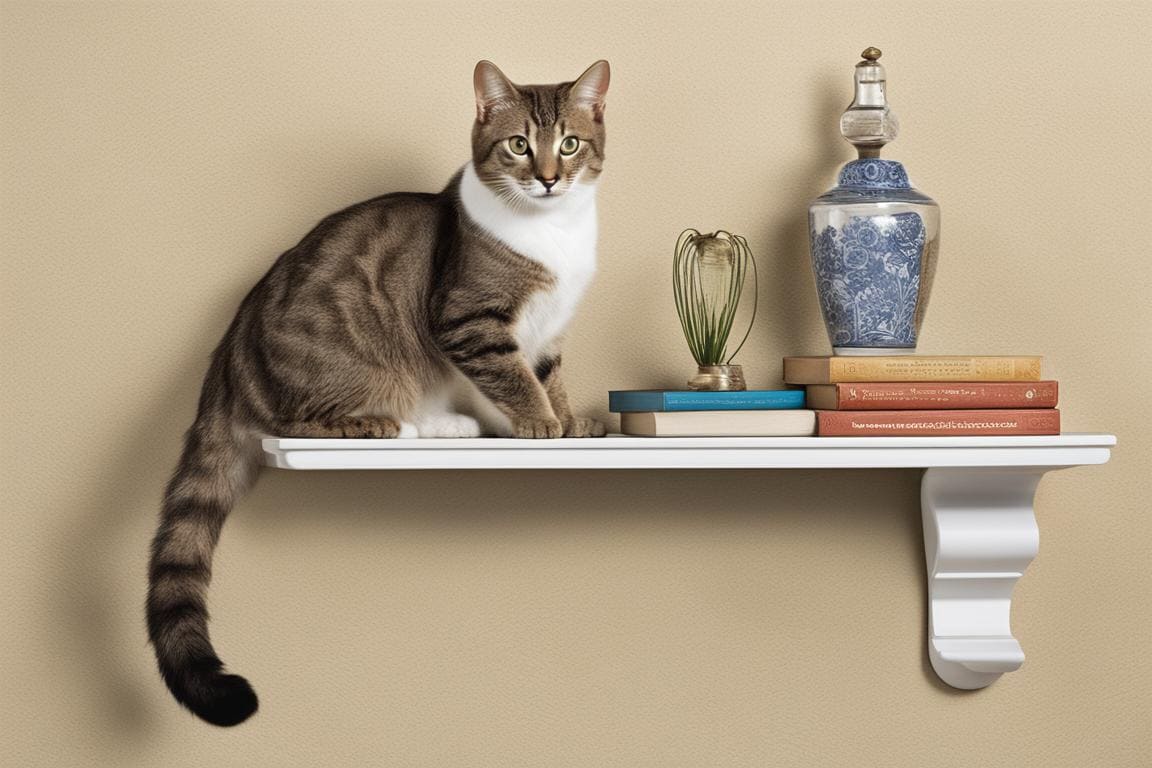10 Tips To Calm Your Cats Down
1. Give the Cats Time to Adjust to Each Other
Cats are not creatures of instant gratification. They’re the long game players of the pet world. When I introduced my second furball, Nibbles, to the resident queen of the house, Whiskers, I was naïve to think they’d sniff and be buddies. It took weeks of cautious circling, eerie standoffs, and the occasional hiss before they reached a détente.
Insider Tip: Introduce cats to each other gradually. Keep them in separate rooms and let them sniff each other under the door. Swap bedding between them to mingle scents. And whatever you do, don’t rush it. Cats need time to assess and accept it’s their way.

2. Dont Try to Force the Cats to Be Friends
This isn’t a sitcom where feuds are resolved in 30 minutes. Forcing cats to interact before they’re ready is like trying to mix oil and water messy and futile. Trust me, I’ve borne the scratches to prove it.
Instead, create opportunities for positive associations. Feeding them on opposite sides of a closed door, then gradually opening that door a crack this is the slow dance of feline friendship formation. They need to associate each other’s presence with good things like food and treats, not the pressure of forced camaraderie.
3. Make Sure Each Cat Has Their Own Space
Territory is to cats what privacy is to us humans sacred. When Whiskers felt that Nibbles was encroaching on her throne, the claws came out. Cats need their own space, their own ‘rooms’ to retreat to.
Make sure you have multiple perches, beds, and hideaways. Cats love vertical space, so consider tall cat trees or shelves. My breakthrough came when I installed a set of wall perches suddenly, there was room for two queens in the kingdom.

4. Provide Plenty of Resources
Resource-guarding can spark conflict faster than you can say “meow.” To keep the peace, ensure that there are ample supplies of everything food bowls, water fountains, litter boxes, and toys. The golden rule? Have n+1 of each resource, where ‘n’ is the number of cats.
5. Use Pheromones
The cat world is ruled by scents and pheromones. I was skeptical until I saw the effects firsthand. A diffuser emitting synthetic pheromones akin to the ones cats produce when they feel content can work wonders.
These pheromones send a signal to your cats that all is well in their world. It’s like aromatherapy for cats; it doesn’t work for every cat, but when it does, it’s like flipping a switch from chaos to calm.
6. Try a Calming Supplement
There’s a plethora of calming supplements on the market, and while I’m not one to jump on every bandwagon, I’ve found that the right supplement can help take the edge off. Look for ingredients like L-Theanine, which is also used to alleviate anxiety in humans.
Remember to always consult with your vet before starting any new supplement. They can provide guidance on the proper dosage and any potential interactions with your cat’s existing diet or medications.
7. Use a Calming Collar
Think of a calming collar as a personal diffuser for your cat. Infused with calming pheromones or soothing essential oils, they can provide a constant source of tranquility. I’ve adorned both Whiskers and Nibbles with these, and while they resembled furry philosophers pondering the meaning of life, they were decidedly more Zen.
8. Try a Calming Diffuser
A calming diffuser can be a game-changer. It’s like having a peacemaker in the plug socket. Whether it’s Feliway or another brand, these devices release a synthetic copy of the feline facial pheromone, which cats use to mark their territory as safe.
When I plugged one in, it didn’t happen overnight, but the atmosphere shifted. There were fewer standoffs and more instances of dare I say peaceful coexistence.

9. Use a Calming Spray
A calming spray is another tool in the feline Zen arsenal. It’s portable peace; spritz it on bedding, in carriers, or even on your clothes. I’ve used it before vet visits, and it’s like cloaking myself in an invisibility shield from stress for my cats.
Real-Life Example: How Giving Cats Time to Adjust Can Make a Difference
Sarah’s Experience
When Sarah first brought home her new cat, Luna, she was excited about the prospect of her existing cat, Bella, having a new friend. However, things didn’t go as smoothly as she’d hoped. Bella and Luna constantly fought, and Sarah was at her wit’s end.
After reading up on cat behavior, Sarah decided to give Bella and Luna some time to adjust to each other. She kept them in separate rooms and gradually introduced their scents to each other by swapping bedding and toys. She also made sure to give each cat plenty of individual attention.
After a few weeks, Bella and Luna started to show signs of acceptance towards each other. They stopped hissing and growling, and eventually even started playing together. Sarah’s patience and commitment to letting the cats adjust to each other made a world of difference in their relationship.
This experience taught Sarah the importance of giving cats the time they need to adapt to each other, and she’s grateful that she didn’t rush the process.
10. Talk to Your Vet
When all else fails, or you’re unsure where to start, talk to your vet. They can rule out any medical issues that might be causing stress or aggression and recommend a tailored approach for your feline family members.
Insider Tip: Always keep your vet in the loop. They’re the experts and can offer insight or options you might not have considered, such as prescription medication for more severe cases of anxiety or aggression.
In conclusion, calming down your cats when they’re playing or fighting is a multifaceted endeavor, and what works for one may not work for all. It’s about understanding the individual quirks and needs of your feline friends and providing them with a stable, stress-free environment. Be patient, be observant, and above all, be kind. With these ten tips and a little feline finesse, peace can be restored to your pet kingdom.
Frequently Asked Questions
Q: Who enjoys watching cats playing or fighting?
A: Many pet owners and animal lovers enjoy watching cats play or interact.
Q: What is the difference between cats playing and fighting?
A: Cats playing involves gentle swatting and stalking, while fighting includes aggressive behavior and loud vocalizations.
Q: How can I encourage my cats to play instead of fight?
A: Provide plenty of toys, scratching posts, and interactive playtime to channel their energy into positive play behaviors.
Q: What if my cats’ play turns into a fight?
A: If play escalates into a fight, distract them with a loud noise or gently separate them to prevent any potential harm.
Q: How do I know if my cats’ fighting is serious?
A: Serious fighting involves hissing, growling, and aggressive behavior. Seek advice from a veterinarian or animal behaviorist if needed.
Q: What if my cats don’t seem interested in playing?
A: Some cats may be less playful than others. Try different types of toys and activities to find what engages your individual cats.




Leave a Reply